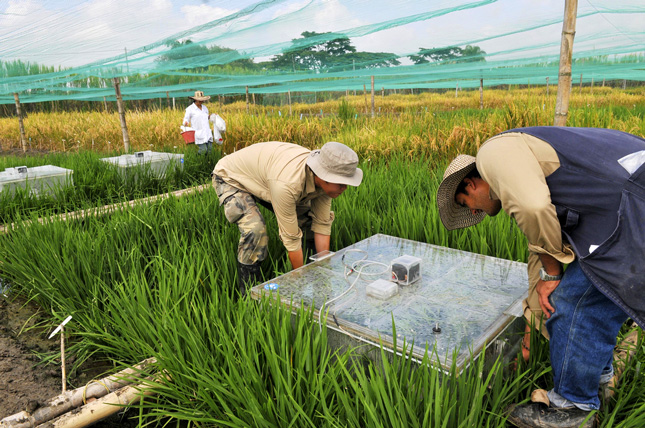-
Lisa Palmer, Yale Environment 360
Colombian Farmers Adjust to Changing Conditions With “Climate-Smart” Agriculture
February 10, 2015 By Wilson Center Staff
Rice is a thirsty crop. Yet for the past three years, Alberto Mejia has been trying to reduce the amount of water he uses for irrigation on his 1,100-acre farm near Ibague in the tropical, central range of the Colombian Andes.
He now plants new kinds of rice that require less water. He floods his paddies with greater precision and has installed gauges that measure the moisture content of the soil. On a daily basis he can determine how much nitrogen the plants need, and he relies on more advanced weather forecasting to plan when to fertilize, water, and harvest the grain.
“We are learning how to manage the crops in terms of water, which will be a very, very good help for us now and in the future,” Mejia says, adding that the current El Niño weather pattern has caused serious drought. “We have very difficult days — hot, with no rain. It’s dry. There are fires in the mountains … Growing crops makes it a complicated time here.”
Ever since a drought devastated his yields five years ago, Mejia has been eager to integrate sweeping changes into his rice production. He believes that the weather has become more erratic and is concerned that future climate change will make rice farming even more difficult. As a result, and with the help of his local rice growers association and scientists from the International Center for Tropical Agriculture, he is embracing what has come to be known as “climate-smart agriculture.” These are agricultural techniques that protect farmers from the effects of global warming and improve crop yields, while also limiting greenhouse gas emissions.Continue reading on Yale Environment 360.
Lisa Palmer is a Wilson Center Public Policy Scholar and freelance journalist.
Photo Credit: CIAT researchers measure greenhouse gas emissions from rice paddies, courtesy of Neil Palmer/CIAT.
 A Publication of the Stimson Center.
A Publication of the Stimson Center.



